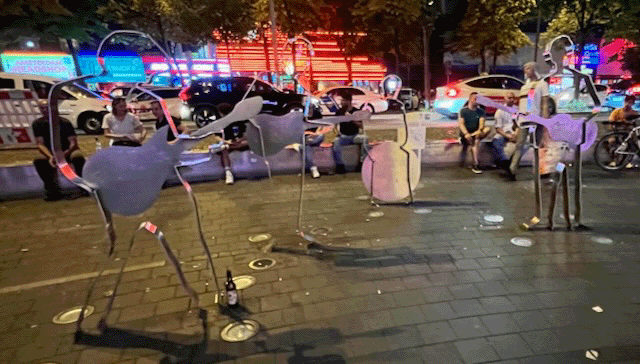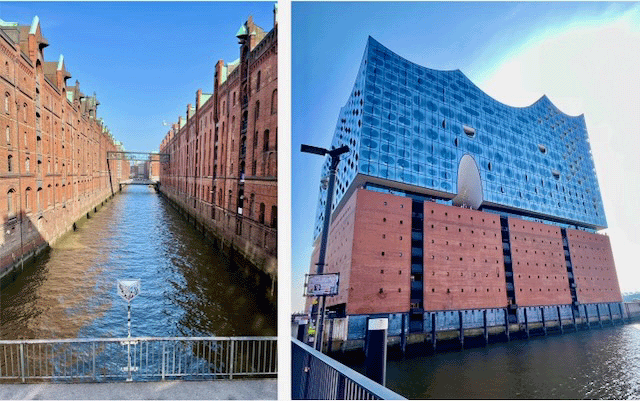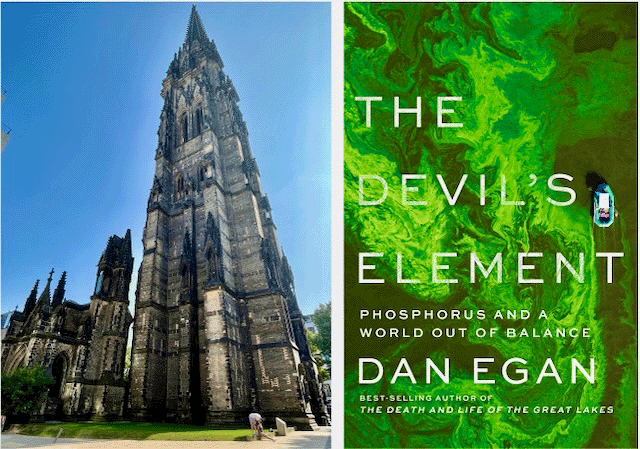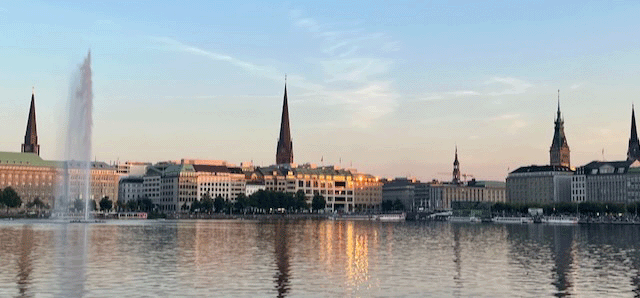Hamburg
I came back to China via Europe, and stopped in to see my good friends Janosch & Jana – both Ph.D. environmental economists whom I’ve known for many years, and who have welcomed me on various vacation stays in Tuscany, Southern France, etc. They live in Buchholz, a town just south of Hamburg – and this was my chance to visit a city that I’m afraid I knew very little about…. other than that the Beatles had spent time and played there before becoming world famous.
Hamburg sits about a hundred kilometers from the North Sea on the Elbe River, and I had always thought of it as an in-land city – never realizing the importance of its port (in both historical and present-day terms). I had also never realized how lively and beautiful it is – with parks and old-time port buildings, modern architecture like the Elbphilharmonie, and a vibrant nightlife in the red-light Reeperbahn district (where the Beatles played in joints typical of a port city).

Following up on my recent London & Liverpool visit, we headed to Beatles-Platz one warm evening, to see the sights. It’s a bit difficult to capture and appreciate the ‘see-through’ Beatles statues in the photo above – as well as the fact that the black circular setting is shaped like a giant vinyl record. But the photo does give some indication that the Reeperbahn remains a lively place!
Other site visits included the city-center Binnenalster lake (with its notable fountain, seen in the initial photo above); the City Hall ‘Rathaus’; the former city wall area, now transformed into a scenic city park; the UN World Heritage Site historic port area; and the spire remains of the old St. Nicholas church – now a memorial of the city’s bombing in World War II.

I was visiting Hamburg on my way to China, getting ready to teach my environmental course (over-subscribed, with 39 students signed up!) – and took along a very recent book, Dan Egan’s The Devil’s Element, about the worrisome pollutant phosphorus. Phosphorus is one of two pollutants (the other being nitrogen) that cause massive algal blooms in lakes and offshore areas around the world, and the element has become a major pollution concern. What I did not realize, however, was that Hamburg would play a major role in the book!
An early chapter in this fascinating work describes the discovery of phosphorus by the alchemist Hennig Brandt in the city in 1669. Brandt was a failed glass-maker who became a self-proclaimed Doctor (of both medicine & philosophy) – despite having no formal education. He isolated phosphorus with a recipe that involved boiling vats of urine, but was never able to take the ultimate desired step – to turn it into gold. It is extremely flammable, however, and can spontaneously ignite if exposed to air — burning both equipment and any nearby flesh, making its production a very risky endeavor!

Such characteristics led to the story of that bombed-out church memorial. The Allies used phosphorus in their bombs, which were specifically designed to maximize the incendiary effects of such weapons. The death toll from Operation Gomorrah in Hamburg is not precise, since in some cases no bodies remained; it burned so hot that physicians weighed ashes to estimate the fatality rate (estimated at about 38,000 persons).
Egan’s book ends with a company building a state-of-the-art phosphorus recovery plant in the city, on the west bank of the Elbe River, to tackle this very necessary mineral – but also current environmental scourge. The devil’s element indeed!
